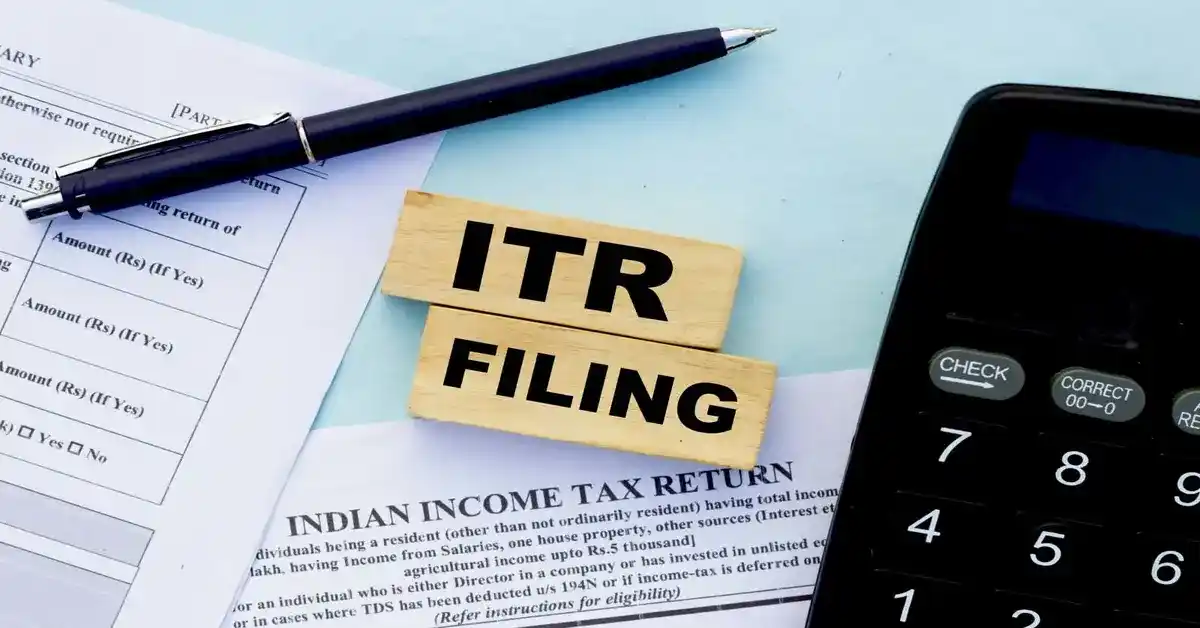Filing Your Taxes? Avoid These Common Mistakes! Your Easy 7-Step Checklist
Tax season is here, and for many, that means stress. You start hearing words like “ITR,” “deductions,” and “deadline,” and it all feels a bit overwhelming. But it doesn’t have to be! Filing your Income Tax Return (ITR) is just about telling the government what you earned and what tax you’ve paid. When you do it correctly, the process is smooth, you get your refund quickly, and you stay out of trouble.
The main deadline for filing your taxes for the money you earned from April 2024 to March 2025 is July 31, 2025.
Here’s your simple, step-by-step guide to filing your ITR correctly and with confidence.
Step 1: Gather Your Financial Toolkit (All Your Documents)
Imagine trying to bake a cake without all the ingredients. It would be a mess! Filing taxes is the same. Before you even log in to the tax portal, you should collect all your important papers.
Your must-have list includes:
- PAN and Aadhaar Cards: These are your main IDs for everything tax-related. Make sure you have linked them!
- Form 16: If you are a salaried employee, your company gives you this form. It’s a summary of your salary and the tax your employer already deducted (TDS).
- Bank Statements: You need to report the interest you earned from your savings accounts and fixed deposits (FDs).
- Investment Proofs: Did you invest in tax-saving options? Grab those receipts for things like life insurance (LIC), Public Provident Fund (PPF), medical insurance, or donations you made. These will help you lower your tax.
- Other Income Details: Did you earn money from rent, selling stocks or mutual funds, or dividends? Get those statements ready.
Step 2: Pick the Right Form for You
The tax department has different forms for different people. Think of it like choosing the right application form. If you pick the wrong one, the department will reject it.
- ITR-1 (Sahaj): This is the simplest form. Use this if your total income is under ₹50 lakh from your salary, one house, and interest.
- ITR-4 (Sugam): This is for freelancers or small business owners who have a total income up to ₹50 lakh and choose the simple presumptive taxation scheme.
- ITR-2 and ITR-3: These are for more complex cases, like if you have income from selling property, stocks (capital gains), or have a large business.
Step 3: Be Honest About All Your Earnings
You must report every single rupee you earned in the financial year. People often forget small income sources, which can lead to problems later.
Remember to include:
- Interest from your savings account: Yes, even this counts! You get a deduction on it later, but you must report it first.
- Interest from FDs: This is fully taxable.
- Rental income: If you own a property and have rented it out.
- Any “side-hustle” income: Money you made from freelancing or a small gig.
- Exempt income: Things like your PPF interest or agricultural income don’t get taxed, but you still have to list them in your return.
Step 4: Play Detective: Match Your Info with AIS and Form 26AS
This is the most important step to avoid a tax notice.
The income tax department already has a lot of information about your financial transactions in a statement called the Annual Information Statement (AIS). Form 26AS is a summary of all the tax that has already been deducted from your income (TDS).
Before you file, you must download your AIS and Form 26AS from the tax portal. Check that the income and TDS amounts listed there match your own records. If they don’t match, the tax department’s computer will flag your return for a check.
Step 5: Claim Your Tax Discounts (Deductions) Smartly
The government gives you several ways to lower your taxable income. We call these deductions. Make sure you claim all the ones you are eligible for, but never claim a deduction without proof.
- Section 80C: The most popular one, letting you claim up to ₹1.5 lakh for investments in PPF, EPF, school fees, and more.
- Section 80D: For the health insurance premiums you pay for yourself and your family.
Step 6: Choose Your Tax Plan: Old Regime vs. New Regime
You have a choice between two tax systems.
- The Old Regime: Lets you claim all the deductions (like 80C, 80D, HRA). This is good if you do a lot of tax-saving investments.
- The New Regime: Has lower tax rates but you cannot claim most deductions. This is the default option now.
Do a quick calculation to see which one saves you more money. If you want the Old Regime, you have to actively select it when you file.
Step 7: Finish Strong: File on Time and Verify!
Just filling out the form is not enough.
- File before July 31, 2025: If you file late, you will have to pay a penalty.
- Verify your return: After you submit your ITR, you have 30 days to verify it. An unverified return is an incomplete return. The easiest way to verify is electronically using an Aadhaar OTP or your net banking account.
What Happens If You File Incorrectly?
Being careless can cost you. You might receive a notice from the tax department, have to pay a heavy penalty (up to 200% of the tax you tried to avoid), and your refund could get stuck.
By following these simple steps, you can file your taxes with peace of mind. Be careful, be honest, and you’ll be done before you know it!









